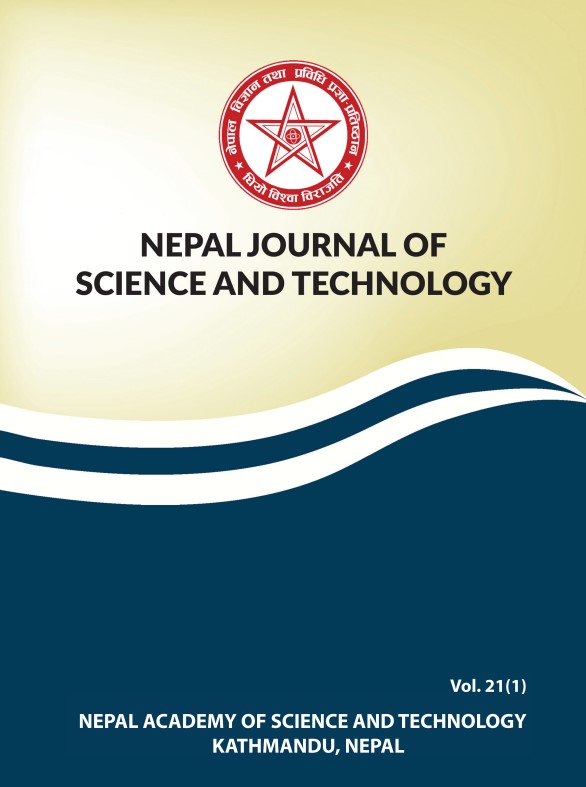Phytochemical Screening and Evaluation of Antioxidant and Antibacterial Potential of Selected Species of Gentiana from Nepal Himalaya
DOI:
https://doi.org/10.3126/njst.v21i1.49913Keywords:
Gentiana, Bioactivity, Phytochemistry, Markers, QuantificationAbstract
Various species of Gentiana find their use to treat various digestive and topical ailments in traditional medicine in Nepal. The present work reports the results of preliminary phytochemical analysis and biological activities of extracts of four different species of Gentiana (G. depressa, G.ornata, G. urnula, and G. capitata) from Nepal Himalaya. Furthermore, the study also reports a semi-quantitative estimation of major bioactive compounds in those extracts. The total flavonoid content was found to be highest (19.09±0.97mgQE/g) in methanol extracts of G. capitata and lowest (4.22±0.66 mgQE/g) in aqueous extracts of G. urnula. The highest amount (79.2±19.19 mgGAE/g) of total phenolic content was observed in methanolic extracts of G. depressa, while the lowest amount (37.11±2.18 mgGAE/g) was observed in aqueous extract of G. urnula. The methanol extract of G. depressa showed the best antioxidant activity among the Gentiana species tested. Extracts of all the species tested showed weak antibacterial activity even at the highest concentration of the extract. Semi-quantitative estimation showed that swertiamarin was in higher quantities than amarogentin and mangiferin. The highest concentration of swertiamarin and mangiferin (0.109±0.013 mg/g and 0.018±0.001 mg/g, respectively) was identified in G. ornata, while the highest concentration of amarogentin (0.075±0.005 mg/g) was observed in G. capitata. These results justify the folklore use of these species in traditional medicinal practices in Nepal.
Downloads
Downloads
Published
How to Cite
Issue
Section
License
Copyright (c) 2022 Niroj Shakya, Supreet Khanal, Giri Prasad Joshi, Deepak Raj Pant

This work is licensed under a Creative Commons Attribution-NonCommercial 4.0 International License.
Authors retain copyright and grant the journal right of first publication.




